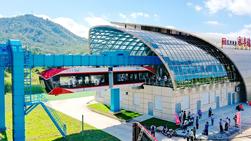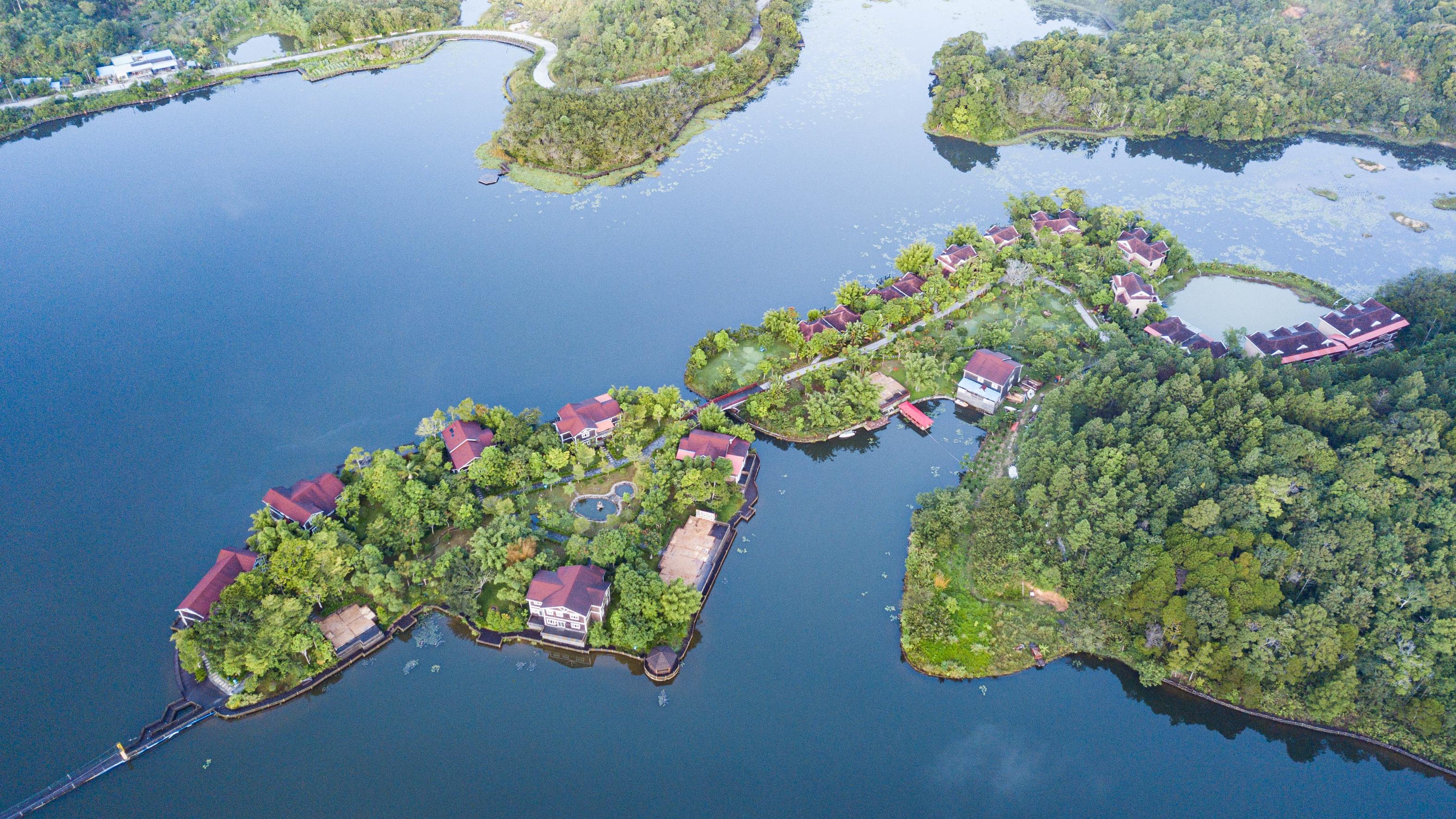 This aerial photo taken on Aug 25, 2022 shows a view of Maowei floating photovoltaic power station on water in Gucheng township of Yingshang county, east China's Anhui province. (HUANG BOHAN /XINHUA)
This aerial photo taken on Aug 25, 2022 shows a view of Maowei floating photovoltaic power station on water in Gucheng township of Yingshang county, east China's Anhui province. (HUANG BOHAN /XINHUA)
BEIJING - China's State Council Information Office on Thursday released a white paper titled "China's Green Development in the New Era."
The white paper aims to present a full picture of China's ideas, actions, and achievements in green development in the new era, and to share with the world its experience in this regard.
According to the white paper, China has made remarkable progress in promoting the green and low-carbon energy, with proportion of clean energy sources increasing.
To vigorously develop non-fossil energy, China has made rapid progress in building large-scale wind and photovoltaic power stations on infertile and rocky terrain and in deserts, the white paper showed.
The country has steadily developed offshore wind farms, actively promoted rooftop photovoltaic power generation in urban and rural areas, and encouraged distributed wind power generation in rural areas. China has built a structured matrix of large hydropower stations in the basins of major rivers, especially those in the southwest.
China has steadily developed offshore wind farms, actively promoted rooftop photovoltaic power generation in urban and rural areas, and encouraged distributed wind power generation in rural areas. China has built a structured matrix of large hydropower stations in the basins of major rivers, especially those in the southwest
Meanwhile, China has developed solar, biomass, geothermal and ocean energy, and power generation through urban solid waste incineration in accordance with local conditions. It has developed nuclear power in a safe and orderly manner. Committed to innovation-driven development, China has worked on developing hydrogen energy.
ALSO READ: China to facilitate green tech innovation with new plan
Thanks to these efforts, the proportion of clean energy sources in total energy consumption increased from 14.5 percent in 2012 to 25.5 percent by the end of 2021, and the proportion of coal decreased from 68.5 percent to 56 percent over the same period, as per the white paper.
By the end of 2021, the installed capacity of renewable energy was more than 1 billion kilowatts, accounting for 44.8 percent of China's overall installed capacity. The installed capacity of hydropower, wind power, and photovoltaic power each exceeded 300 million kilowatts, all ranking the highest in the world.
Green transport
Meanwhile, the white paper showed China has accelerated the building of a green transport network, with optimizing the structure of energy consumption and improving the efficiency of organization as its priorities.
 China's first independently developed pilot line for trains using rareearth permanent magnetic levitation (PML) technology completed construction in Xingguo county, Jiangxi province, on Aug 9, 2022. (ZHU HAIPENG / FOR CHINA DAILY)
China's first independently developed pilot line for trains using rareearth permanent magnetic levitation (PML) technology completed construction in Xingguo county, Jiangxi province, on Aug 9, 2022. (ZHU HAIPENG / FOR CHINA DAILY)
The country has also accelerated the construction of special railway lines, promoted the shift of freight transport from road to railway and waterway, and encouraged intermodal transport, the document showed.
Scientific eco-environmental conservation red lines have been developed to ensure national eco-environmental security. More than 30 percent of China's land area - including integrated and optimized protected areas - is now under the protection of such red lines
In 2021, the railway and waterway freight volume accounted for 24.56 percent of the total in China, an increase of 3.85 percentage points over 2012, according to the white paper.China has also promoted the green transformation of transport vehicles. By the end of 2021, the number of China's registered new energy vehicles had reached 7.84 million, accounting for about half of the global figure, according to the white paper.
Protected area
A new type of protected area (PA) system has also been set up in China to promote eco-environmental conservation, the white paper showed.
China is developing a PA system with national parks as the mainstay, supported by nature reserves and supplemented by nature parks, according to the document.
ALSO READ: China aims to expand protected area management
The first batch of five national parks - the Three-River-Source National Park, the Giant Panda National Park, the Northeast China Tiger and Leopard National Park, the Hainan Tropical Rainforest National Park, and the Wuyishan National Park, has been established.
The country is making steady progress in building national parks in environmentally important regions. As of the end of 2021, nearly 10,000 PAs of various types and levels had been established.
 This undated file photo shows a view of Jiangfengling Tianchi Lake in the Hainan Tropical Rainforest National Park, Hainan province. (PU XIAOXU / XINHUA)
This undated file photo shows a view of Jiangfengling Tianchi Lake in the Hainan Tropical Rainforest National Park, Hainan province. (PU XIAOXU / XINHUA)
Scientific eco-environmental conservation red lines have also been developed to ensure national eco-environmental security. More than 30 percent of China's land area - including integrated and optimized PAs - is now under the protection of such red lines.
READ MORE: China seeks to balance energy needs, green power transition
China's forest coverage ratio and forest stock volume registered 30 consecutive years of growth, making China the country with the highest growth in forest resources and the largest area of man-made forest.
China is also the first country to realize zero net land degradation - its desertified and sandified areas are both shrinking, and this is helping the world to reach the global goal of zero net land degradation in 2030, the white paper showed.


